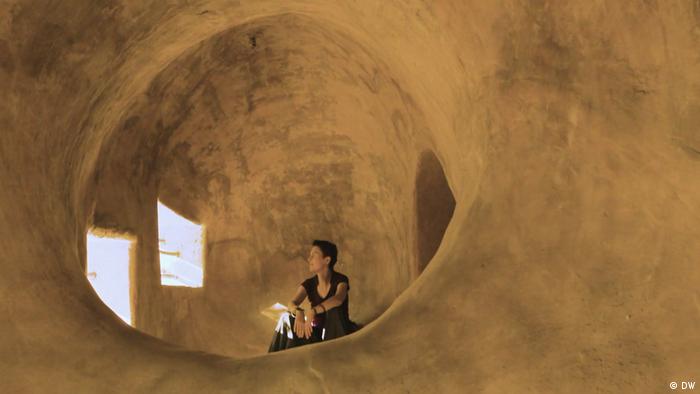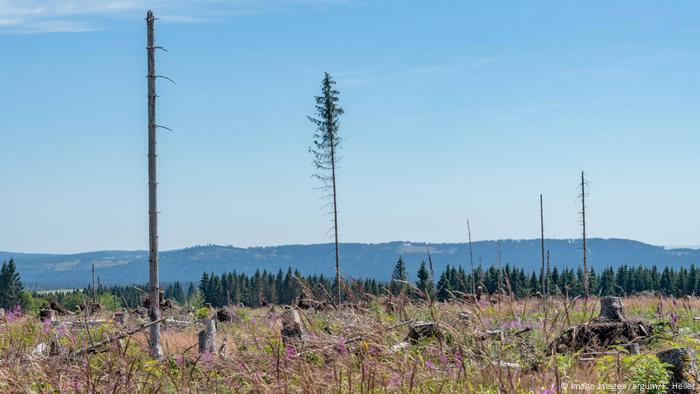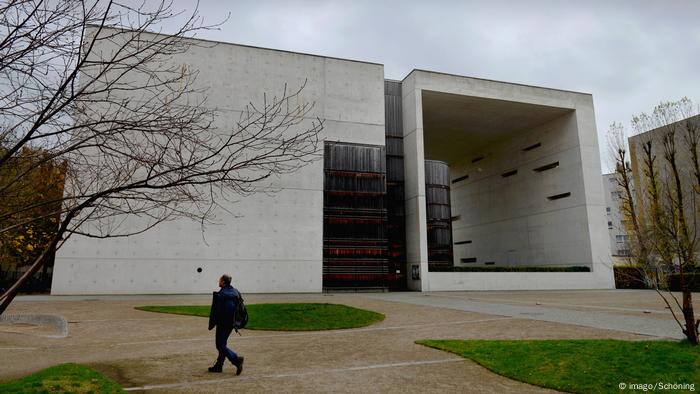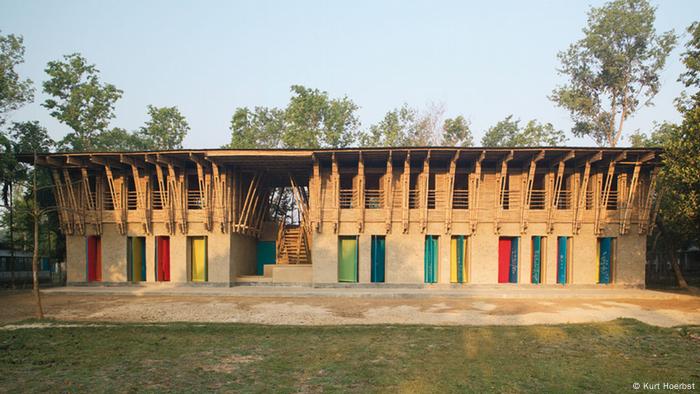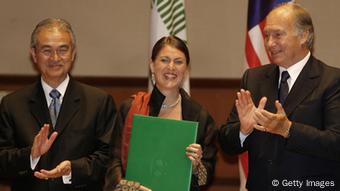Scientists want to build a new, very different Arecibo Telescope to replace fallen icon

Arecibo Observatory's massive radio dish was many things to many people: pulsar finder, broadcaster to aliens, asteroid mapper, Bond villain's hidden satellite dish, Puerto Rican icon, birthplace of future scientists. Until seven months ago, that is, when gravity got the best of an engineering marvel that had endured everything thrown its way for decades and the entire platform crashed down.
Since that fateful day, plenty of eyes have turned to analyzing what went wrong, while many hands have gotten to work sorting through and cleaning up the wreckage. And the brains have been doing what brains do best: dreaming of what science might come next for the site. For one group of scientists with deep ties to Arecibo, that meant dreaming up an entirely new type of telescope: one that would fill the gap left by the iconic instrument, then go much further.
"I personally think that this was the first cut; this was done in the wake of the collapse just to show that there are viable options of continuing the legacy of fantastic science at the telescope," Tracy Becker, a planetary scientist at the Southwest Research Institute in San Antonio and co-author on a white paper describing the design, told Space.com.
"I don't think that this version has to necessarily be what a new, built version will look like," she added. "It could end up looking more like the original telescope, or it could look completely different from anything that we've imagined so far. The primary goal was to show that we could use that space and continue that legacy of really powerful science."
Related: Losing Arecibo Observatory would create a hole that can't be filled, scientists say
The design, dubbed the Next Generation Arecibo Telescope, is perhaps better approached as a statement than a blueprint. Right now, scientists aren't even sure this particular design can be built. But the project was meant to paint a picture of what the next 60 years of science at Arecibo could perhaps look like — if institutions are willing to show up for the facility, and to do so with ambition.
"We had to think bold and we had to think big, because you don't inspire the next generations and you don't serve the next generations if you just want to do what you were doing," Noemí Pinilla-Alonso, deputy principal scientist at Arecibo Observatory, told Space.com. "That was a result of someone thinking bold and big 60 years ago." Pinilla-Alonso, who is also a planetary scientist at the University of Central Florida, which manages the observatory, is one of dozens of co-authors on the design concept.
The design came together within just two months of the collapse. In part, that's because the process was a salve for scientists with close ties to and strong feelings for the observatory. "It was not so long that it took me to pass from the feeling of sadness, of frustration, to the feeling of, 'We're doing something good. We're working, we're making progress,'" Pinilla-Alonso said
Now, the scientists behind the new concept are trying to keep the momentum going in order to try to accelerate the rebuilding process, Arecibo Observatory Director Francisco Cordova, another white paper co-author, told Space.com.
"Arecibo left a really big hole," he said. "We have hundreds of scientists right now that are scrambling to find another telescope that will be able to give them the data they need to continue their projects."

Institutional options
But there's only so much more that scientists can do on their own, before any institutions step up to fund work on the project.
Meanwhile, the U.S. National Science Foundation (NSF), which owns the site, held a virtual workshop throughout June to explore options for Arecibo Observatory writ large. Officials have emphasized that Arecibo will continue to exist, but the agency has not committed to rebuilding the telescope as it stood, or to supporting a new project at similar scale. The workshop didn't allocate any funding and wasn't meant to result in selected projects.
"There is no current plan to build a new radio telescope, although this is certainly an idea worthy of discussion," workshop leaders wrote in a document describing the process. "For this workshop, however, our main goal is to explore a broad range of options, for the short-, medium- and long-term, which should engage all segments of the community and may be complementary."
(Right now, the NSF has plenty on its hands just to ensure safety at the site and clean up the debris, a process the agency in March estimated would require about $50 million.)
During the workshop, then, the agency focused on broader consideration of the site's future. "NSF is committed to participating in this future development but is not restricting the ideas to the construction of a new telescope," the document noted. "That is certainly one long-term possibility, there are many others, and also near-term projects that could bridge the gap while a potential large project is being designed."
The grand design isn't the only option the NSF will contemplate when it decides what to do with the telescope's legacy.
The observatory overall can resume some science activities fairly quickly. There's a host of other equipment at the site that is still working, unaffected by the collapse, and observatory leadership wants to repair at least some of the antennas of one experiment that sat at the center of the dish to use elsewhere.
Although the crash destroyed all the equipment on the science platform, which had been suspended above the vast 1,000-foot (305 meters) dish on a web of 39 cables from a trio of towers, parts of the radio telescope may have more life in them. NSF officials have said that at least half of the dish survived the collapse, and the panels aren't particularly difficult or expensive to replace. And the bottom portion of all three towers that held the suspended cables remain sturdy, the NSF has said.
That combination could be the basis for rebuilding the lost telescope essentially as it was, but using newer technology and more advanced materials.
"There are many directions to go in," Joanna Rankin, a radio astronomer at the University of Vermont who is not a co-author on the white paper but did formally endorse it, told Space.com. "Of course it's exciting to choose the most ambitious and technologically exciting one, but it's not the only choice."
Related: Puerto Rican scientists mourn loss of Arecibo Observatory's iconic telescope

A new telescope at Arecibo
The daring Next Generation Arecibo Telescope design traces its roots to Zoom meetings that Rankin, who first arrived at the facility five decades ago and has used it ever since, organized in November, when the old telescope's precarity became clear. Quickly dubbed "vigils," the gatherings started with a dozen attendees but ballooned to encompass a couple hundred scientists.
Then, on Dec. 1, the telescope fell. "After the collapse, there was a meeting or two that was kind of a ghoulish, 'Oh my goodness, what happened?'" Rankin said, dissecting how the telescope collapsed and the resulting damage.
But that mood quickly dissipated, she said, as scientists turned their focus to the future. "Immediately, the thing which came to our mind is we should have a plan to rebuild it," Anish Roshi, a radio astronomer at Arecibo Observatory and the lead author of the white paper, told Space.com. "That's when all the discussions and meetings with the community — everything became very active, discussing what to replace this telescope with and how to rebuild this telescope."
The result of that work is a 70-page paper outlining the case for an innovative new Arecibo Telescope to build on the scientific legacy of the fallen instrument.
Unusually for a major facility, bringing together the community who used Arecibo meant reaching across three very different fields of science.
Although ionospheric researchers originally lobbied for the massive radio telescope to conduct atmospheric experiments, scientists specializing in radio astronomy and planetary radar research soon realized that the massive telescope and its powerful radar system could also offer them valuable information.
"Those three scientific specialties evolved a kind of symbiosis at Arecibo, which was completely unique to Arecibo," Rankin said.
Scientists calling for rebuilding say that union of three separate fields ought to be honored into the facility's future. "We wanted to keep being a multidisciplinary facility," Pinilla-Alonso said. "We didn't want to prioritize one against the other, so we had to think of something that could serve the three communities."
In addition to keeping the union of disparate disciplines, the process was based on the premise that a replacement facility should retain the lost telescope's site, tucked away in Puerto Rico's verdant interior. Originally, the site was dictated by the military looking to put the instrument somewhere on U.S. territory near the equator, which remains a relevant criterion.
Astronomers also cited the value of retaining a host of infrastructure that remains despite the collapse, like the sinkhole the telescope nestled inside and the staff and community that support the observatory. "No instrument is really entirely the hardware. The hardware is only the beginning of the story," Rankin said. "Without that skilled staff, it's pretty useless."
Plus, there's a precious resource for which radio astronomers will trek deep into deserts — shelter from the constant chatter of technology operating in the same radio wavelengths that scientists want to observe, and astronomers can't simply pack up that quiet and carry it with them. Regulations around Arecibo protect the facility from radio interference.
"To waste that would be, as my old mother used to say, a crying shame," Rankin said. "It would be incredibly horrid not to use the site in some creative manner, given that we have it."

Science dreams
The first step in designing a new telescope was identifying what a next-generation facility in each field would be able to do. "We didn't start it like, 'Let's design something different,'" Pinilla-Alonso said. "We started discussing the science and what was the role which Arecibo wanted to have for the future."
That's not how scientists are used to coming up with observing programs, Pinilla-Alonso said. "The first challenge is the mindset, because you are used to making the best of one thing that is already there," she said. "You keep asking to do different things, but from the engineering point of view, they tell you, 'No, you cannot do that with this.'"
But not so for pulling together the heart of the Next Generation Arecibo Telescope white paper: new science goals for the site, which form a wishlist of sorts for what experts in each field want next.
Some of the scientific priorities the team identified overlap across the three communities. For example, everyone wants to see more of the sky and in more detail. "More sky to explore, more discoveries to come," Abel Mendez, a Puerto Rican planetary astrobiologist who regularly used Arecibo to observe and who was involved in the science conversations about a new telescope, told Space.com.
Both atmospheric experimentalists and planetary radar experts prioritize a more powerful radar system, although what counts as more powerful from them isn't quite the same. In addition, the planetary radar community doesn't necessarily want to increase power if it means sacrificing range, since one of Arecibo's strengths was that it could spot even asteroids that scientists hadn't quite pinned down yet.
Related: Losing Arecibo's giant dish leaves humans more vulnerable to space rocks, scientists say
"Arecibo was sort of the big, blunt instrument, and so if things weren't perfect it still worked," Mike Nolan, a planetary scientist at the University of Arizona, told Space.com. "As you get fancier and fancier, that's less true." But the white paper scientists say the design they sketched out would be able to observe six times as many asteroids.
Meanwhile, for radio astronomers, a clear priority was to be able to point the instrument to the center of our galaxy, which requires the flexibility to point a full 48 degrees away from the sky's zenith. (Your clenched fist held at arm's length covers about 10 degrees of sky.)
Overall, the specifications that the team worked toward meant that a few new types of science may be possible at the sort of facility they outline, in addition to the work that the facility has done for decades.
One of those additional fields is understanding space weather, a host of assorted influences the sun has on the solar system that can endanger astronauts and disrupt satellites in orbit and power systems on the ground. And it turns out that the proposed capabilities of the new design would allow scientists to better monitor space weather, including studying the solar wind and coronal mass ejections, two particularly relevant phenomena.
In addition, the design concept's radar system would be so much more powerful than the lost system that it could observe defunct satellites and other space debris in addition to its work on space rocks. For space junk in geosynchronous orbit, the new design could see pieces about 3 feet (1 meter) across; the radar would also be able to monitor large debris out as far as the moon.

"A dish of dishes"
From the list of desired capabilities, scientists set about designing one possible telescope to fulfill the Arecibo community's goals. The result is nothing like the lost instrument.
Instead of one big dish, the new design would fill the old telescope's massive bowl-shaped sinkhole with a closely packed hive of smaller dishes perched on perhaps seven massive tilting plates, a "dish of dishes," as Pinilla-Alonso described it. The precise statistics of those dishes is a matter of tradeoffs: more smaller dishes or fewer larger dishes.
"I remember when I got the first draft of the paper with all the engineering ideas all formalized, and I was just surprised," Mendez said. "Wow, that's a big change." But it's a big change that would address many longstanding issues with the previous telescope, scientists noted, including the heavy platform that was ultimately the telescope's downfall.
The scientists behind the new design concept considered both a massive dish in a fixed position, like the lost telescope, and a scattering of many individual dishes across a landscape, like the Very Large Array in New Mexico, a two hour drive southwest of Albuquerque. But in the end, they determined that what matched the science needs best was a sort of blend of those two models: many small dishes crammed together and able to move in tandem.
There's just one little problem: The scientists aren't sure yet whether such a structure can actually be built.
But the outlined idea gives engineers something to work with, a place to start digging into the tradeoffs involved in building an ambitious new telescope. The scientists behind the concept hope that process can begin later this year. "It's a conceptual design," Rankin emphasized. "No one has passed it by all the droves of engineers that need to check it and think about it to decide whether it can actually be built or would work if it was built."
Politics at play
Engineering questions aren't the only hurdles to tackle to make a new Arecibo a reality. The trickiest piece, of course, is finding the money to build anything at the scale of the original telescope. The authors of the white paper suggest that a budget on the scale of $454 million could cover construction.
But even before the collapse, Arecibo's budget has been a sore subject, as the NSF has decreased its funding for the observatory over the past two decades to address larger agency budget crunches, Rankin said.
"Things started to go sour when, in the first years of the 2000s, the NSF budget was supposed to double and didn't," Rankin said. "There'd been no Nobel Prize, no immediate huge splash from the second upgrading, and so Arecibo became kind of an easy target."
It's not like other big budget increases have come through since then. And although Arecibo's situation echoes the abrupt collapse in 1988 of the Green Bank Telescope in West Virginia that was rebuilt by 2000, Rankin doesn't expect Arecibo to be as lucky. Strong advocacy in Congress from West Virginia's two senators was crucial in getting that telescope rebuilt, but Arecibo has no such support: As a territory, Puerto Rico doesn't have any representation in Congress.

"Arecibo was always a cheap target because Puerto Rico has no senators," Rankin said. "If that had happened to any of the other NSF facilities, the senators would have been there with boots on, but there was none of that kind of protection for Puerto Rico."
Instead, at the federal level, Puerto Rico has no senators and only a resident commissioner, a member of the House of Representatives who can't join full floor votes.
"The collapse was met with great sadness to say the least," Jenniffer González-Colón, the current resident commissioner, told Space.com in a statement. "Since then, I have been in contact with the different stakeholders to discuss possible ways to move forward, including potential reconstruction of the telescope, so that we can once more fully partake of all of the great features hosted by AO [Arecibo Observatory] and their team of experts, and maintain Puerto Rico’s legacy and contributions to STEM [science, technology, engineering and mathematics] fields.”
Although the telescope was the scientific pride of the island, the territory's government surely can't fund a replacement. Nevertheless, local leaders do support a new telescope, said Mendez, who has been involved in discussions with the government. "They're eager to provide funding for designing, so that would be something new," he said, since the original telescope was built exclusively with money from the mainland. "They're eager to be involved more now."
Serendipitous timing issues could also shape Arecibo's fate. The telescope collapsed midway between President Donald Trump losing his re-election bid and President Joe Biden taking office. The latter is surely more open to both science and Puerto Rico than his predecessor, Rankin noted. "If this had happened two years ago, I wouldn't have given it a chance, just because of the national political situation."
Meanwhile, scientists have their own politics and schedules. Both NASA and the NSF rely on massive documents dubbed decadal surveys to guide their funding decisions. In these roadmaps, large teams of scientists under the auspices of the prestigious National Academies of Sciences prioritize space-science projects on a 10-year time frame.
But the decadal survey that would best match a large, ground-based radio facility is the astrophysics version, which is currently undergoing peer review before publication. Scientists doubt that document can support a rebuilding effort at Arecibo because the telescope collapsed after the committee's deadline for community input.
"Nobody expected that big money might be needed for a rebuilding," Rankin said. "So Arecibo isn't in line to ask for big money for rebuilding." If the observatory cuts the line, so to speak, it risks upsetting other scientists contending for the same money.
A separate decadal survey for planetary science is earlier in the process and still receiving public comments, and the planetary radar swath of Arecibo's work would be relevant to it, although that document traditionally focuses on NASA facilities in space, rather than NSF facilities on the ground.
Cordova said he's confident that funding for design work and a new instrument will come through eventually, although it may not be as soon as scientists would like. "I'm optimistic — I think when you have the right capabilities in an instrument and the right science and operational mission objectives, it's a lot easier to find funding for something," he said.
"We have a concept that is amazing, but that will evolve through the design process, through the feasibility studies process, the engineering studies; all of this will evolve," he said, just as the original telescope did. "It's gonna take some time."
But he has plenty of company in hoping that one day, Arecibo will rise again with a steady eye on our atmosphere, solar system, and beyond.
"It's a situation that's pregnant with possibility, and humanity doesn't take advantage of all wonderful situations," Rankin said. "Anything can happen. There are no guarantees."
Email Meghan Bartels at mbartels@space.com or follow her on Twitter @meghanbartels. Follow us on Twitter @Spacedotcom and on Facebook.

